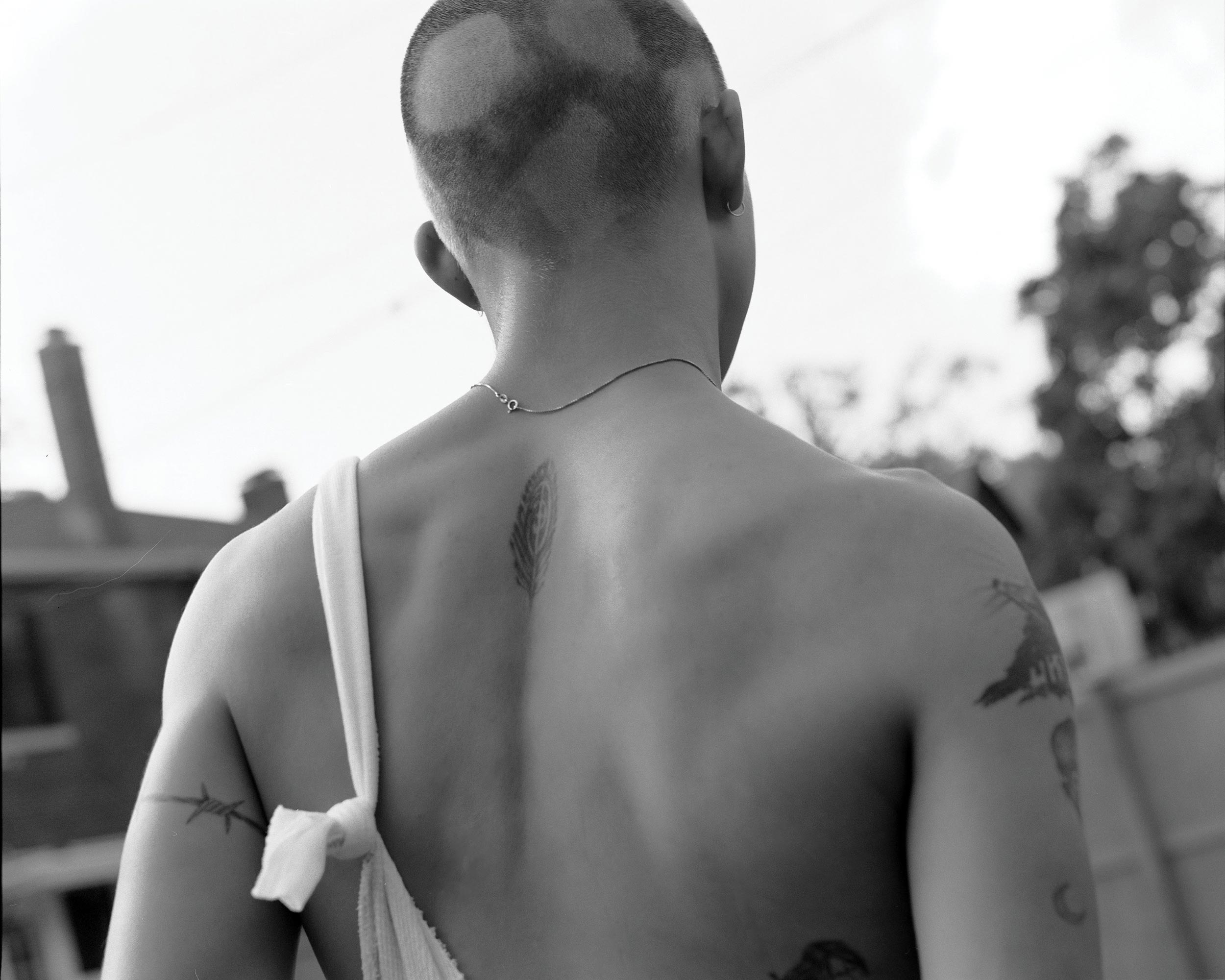The filmmaker visits his family’s Chicago home, presenting an architectural vision of victory with local designers
After a 100-year pause, the Centennial Exhibition of 1876 in Philadelphia reawakened US architects to the structures of yesteryear precipitating the Colonial Revival style that represented a large portion of homes through the 1960s, and finds itself in more schematic style in homes today.
When filmmaker and casting director Kiernan Francis visited his parents’ new house in Chicago—a city where he grew up, but in different apartments—he began thinking through this architectural reference point and considering it in relation to what it meant for Black people in this country to have property of their own. From this line of thought Champions was born. The three-minute-length fashion film explores themes of privacy, vulnerability, transparency, and victory through a narrative frame born of architectural thinking and expressed through fashion, sound, and performance.
“I was traveling back to Chicago, where I grew up, and seeing family and old friends and being inspired by that whole environment,” he explains. He began deep-diving into local designers—“a process of discovery”—in the end selecting Dolor, Francesca Heights, Isaac Couch, Jules Gourley, Tristy World, and WWWYRED, as well as New York-based Telfar—for the film. “Making Champions helped me realize how much talent there is in Chicago. I don’t always like going back, but this gave me the feeling of excitement I often get in New York.”
Francis left the house as it was, more or less, wanting to capture its ethos and the vision of his parents. “I’m really inspired by my mother. I thought her touch on the home was just perfect—how she had everything arranged was so thoughtful,” he reflects. “All those books you see spoke to the narrative I was trying to build. They were grounding. I moved a lot as a kid, but those bookshelves were always there.”
As they move through this space, rich with personality and a sense of home, the models often stare through the lens with an unbroken gaze, almost as if challenging the viewer. “I wanted it to be a bit confrontational,” Francis says. “I wanted the viewer to be aware of themselves as they watched. I wanted to interrogate the viewer and interrogate the camera.”
The audio—created with Andrew Goes To Hell—likewise flickers between distant and near, almost as if breathing with the walls of the home and the single and embracing bodies. Francis says the language in the track spoke to ideas of “perseverance and hard work” he had been considering as he geared up for New York Fashion Week. “I was so stressed, thinking about quote-unquote ‘hard work’ and also the quote-unquote ‘American Dream,’ and then these emotions came flooding in when I was back in Chicago. I was so happy to have this life and be able to do this. I was thinking of what it means for Black families to own their homes. The song became lifting, a kind of prayer or hymn.”
For Francis, this is a full-circle connection with the title, Champions. The title was born initially out of some sonic free association: Chicago, champion. But it became an evocative framework: to think about his parents realizing their dream and making a home, for him to be confident and fully expressive in his creative work, to see all the people—artists, designers, friends—around him make things they believe in. “I wanted to celebrate these people and figures,” he says. “It felt like a win.”
























